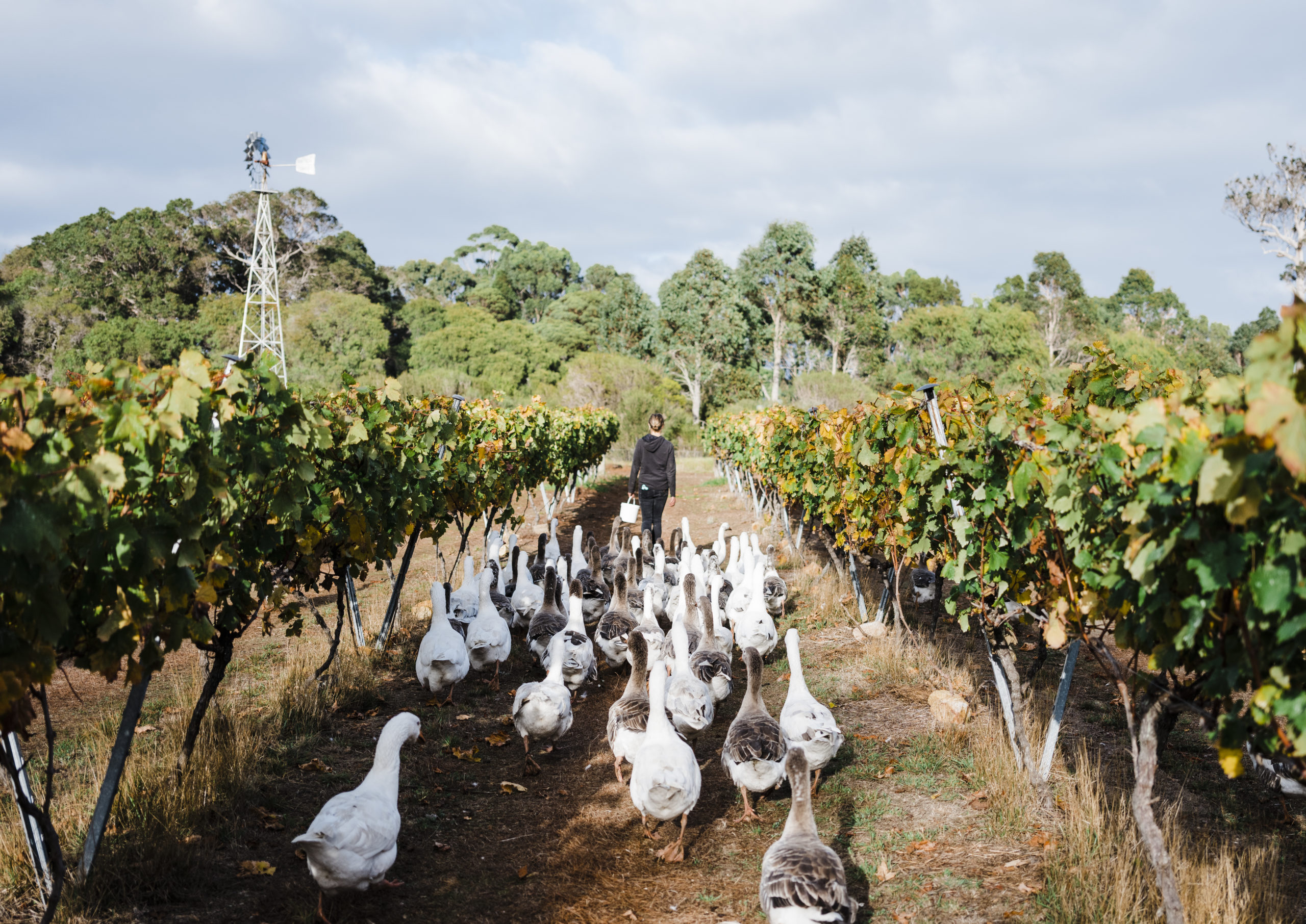
LO-FI WINE IN MARGARET RIVER is riding the very front of the wave of ‘cool’ right now. There is no doubt it is trending. But… what is it?
By Erin Larkin
In a nutshell, while the term is officially undefined, it indicates that a wine has been made with a ‘minimal intervention’ ‘hands-off’, or ‘lo-fi’ approach in the winery. This does NOT mean ‘lazy’, or ‘less work’, in fact it can often be quite the opposite. Lo-fi indicates no or very few additions or adjustments throughout the fermentation process (such as but not limited to: acidification/deacidification, added tannin, chaptalisation (aka added sugar), inoculated ferments and most other tweaks that you can imagine here) and often the wines are bottled unfiltered and/or unfined. Whether or not sulphur is added at bottling is up to the winemaker, however it does assist in maintaining freshness and stability post bottling, so not a bad thing by any stretch of the imagination.
These principles in the winery often follow-on from the farming practice in the vineyards. When applied to viticultural practice, ‘lo-fi’ can refer to an avoidance of pesticides/herbicides sprays on the vines were possible, and the implementation of sheep, guinea fowl and others to assist with supporting overall biodiversity and health of the earth, the vines and the surrounding grounds. The animals also help to keep inter-row weeds at bay, all the while contributing their manure as a natural fertiliser. All in all, a pretty neat and logical circle of life, really. Organics and bio-dynamics (certified or practiced) are not necessary to the lo-fi movement, but they are often part and parcel, as both methodologies eschew the use of chemicals and encourage a more ‘natural’ approach to growing grapes and making wine.
I have just referred to ‘lo-fi’ as a ‘movement’, which makes an implication about impermanence. That is not the intention. I firmly believe that the focus on minimal intervention in winemaking is a) not ground-breaking – it has been happening since the dawn of time in relation to winemaking, we are just coming a full circle, and b) our current fascination with it is a product of our desire as consumers in 2020 – we not only want to know more about what goes into the food and drink products that we buy and consume, we demand it. The world has moved on into an educated space and as technology advances, and our knowledge of the impact of the chemicals we use have on the environment and our bodies expands, we become more vigilant about what we put in them. Hence, this uncomplicated approach to growing the right clones in the right place, utilising natural defence mechanisms where possible against pests and threats to overall vineyard health, and then bringing those grapes into the winery at the right time and ushering them into the bottle, is not only the healthy choice but the most effective way of conveying the story of their place.
So apart from the obvious, isn’t that why we choose one wine over another in the first place – to taste the difference, to taste the place?
